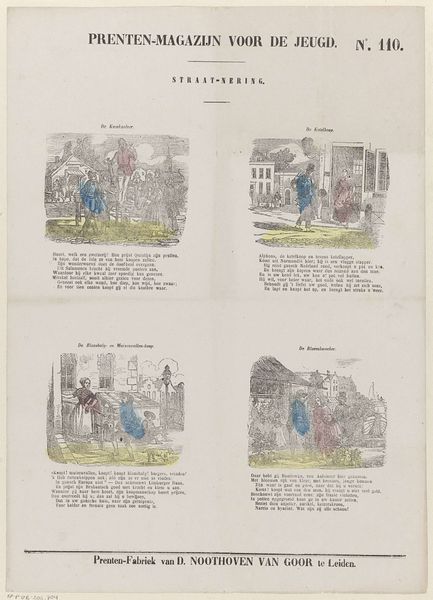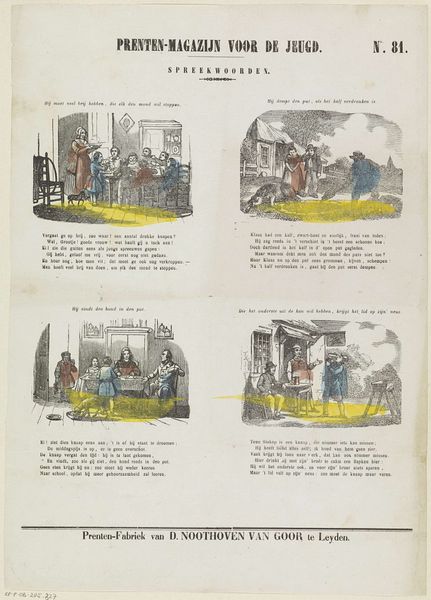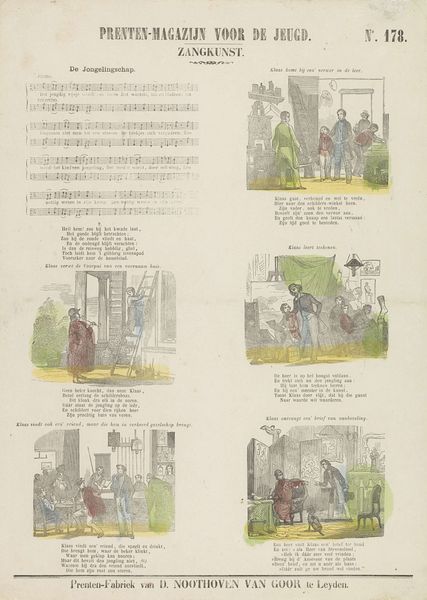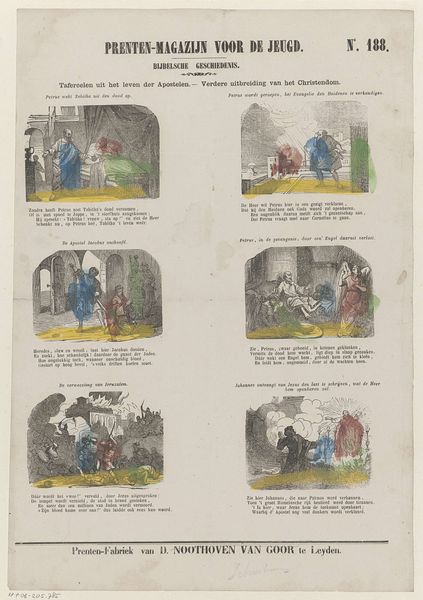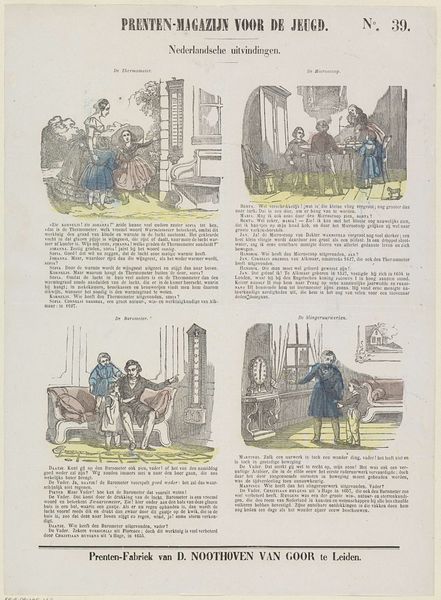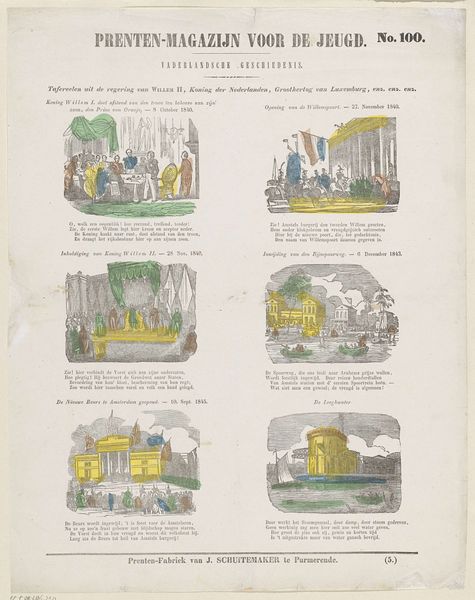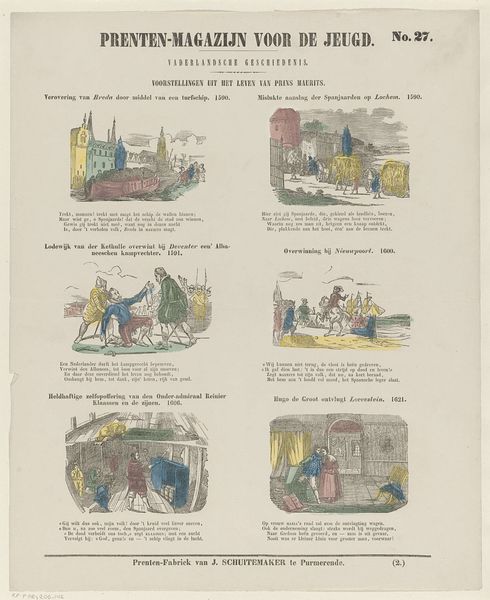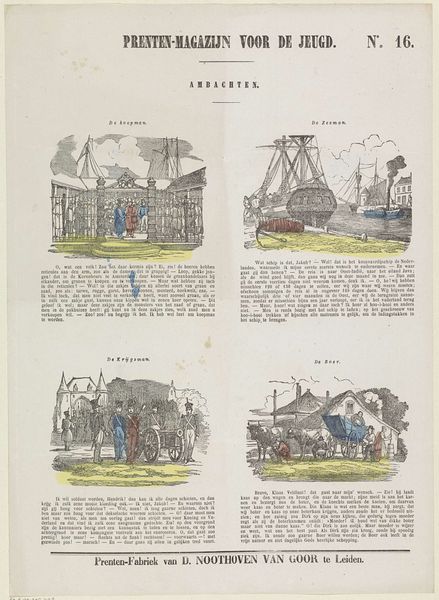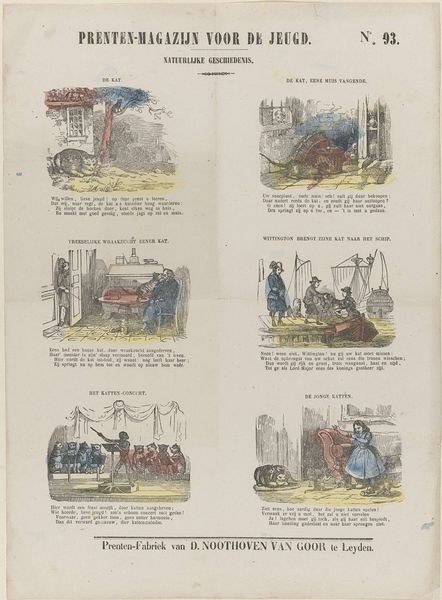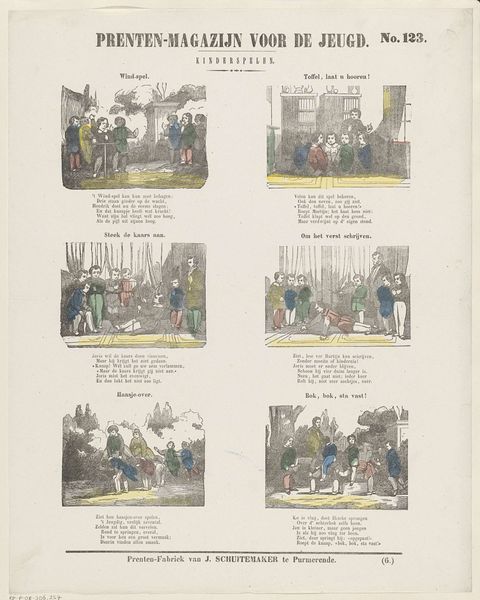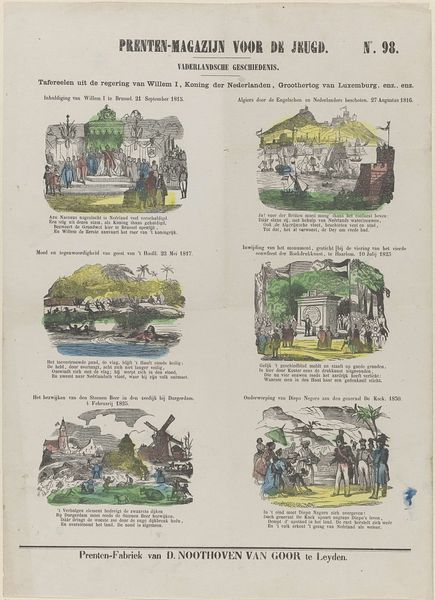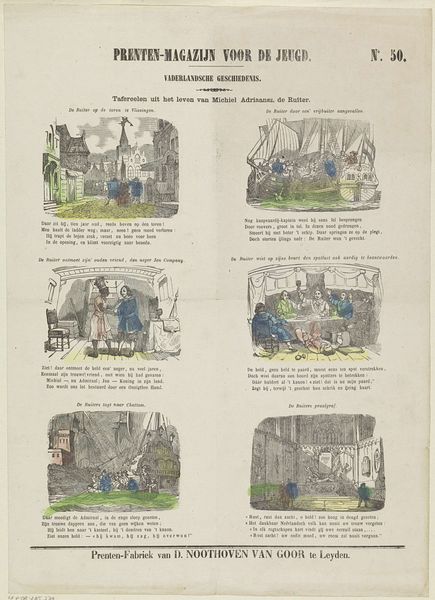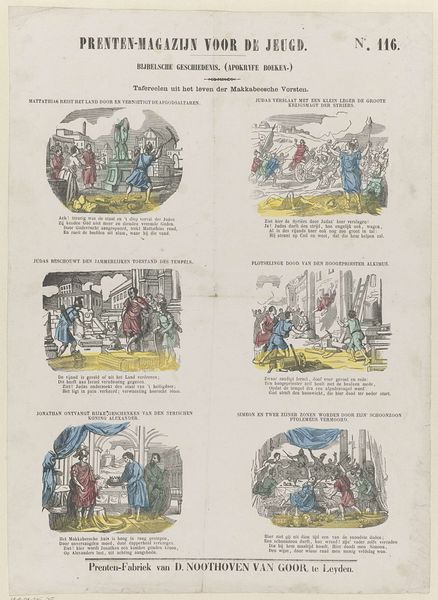
Dimensions: height 424 mm, width 298 mm
Copyright: Rijks Museum: Open Domain
Editor: This is "Kinderdeugden" or "Children's Virtues", a print by Dirk Noothoven van Goor, created sometime between 1850 and 1881. The print contains four different vignettes. It feels like a glimpse into another time, a time of innocence and moral lessons. What do you see in this piece? Curator: Well, immediately, my eyes are drawn to how these scenes capture an ideal. Consider the title itself. Each little scene isn't just a snapshot of daily life; it's a carefully constructed lesson. Look closely at the gestures, the compositions. The children aren't just playing; they're embodying values deemed crucial at the time: self-reliance, compassion, steadfastness in friendship, familial support. What emotional cues are conveyed by the symbolism in their faces and bodies? Editor: I noticed that too, how each image reinforces a different “virtue.” But do you think children at that time would feel alienated or inspired by it? Curator: That’s a crucial question. Consider this not just as an artistic artifact but as a social one. These weren’t displayed in galleries as art. These were aimed to inspire discourse amongst families on what behaviors where morally sound, serving the purpose of cultivating culturally accepted practices in children. Editor: I never considered that. So, it’s less about aesthetic pleasure and more about moral instruction, shaping societal norms through visual storytelling? Curator: Exactly. Each image acts as a signifier. And what that sign signified changed across generations of children exposed to its images, giving rise to shifting perspectives and memories that further contribute to our current culture. Editor: Wow, that's really given me a new way to view art! Thinking about intention adds so much depth. Curator: Indeed. Every image holds layers waiting to be peeled back, each revealing pieces of cultural DNA.
Comments
No comments
Be the first to comment and join the conversation on the ultimate creative platform.
